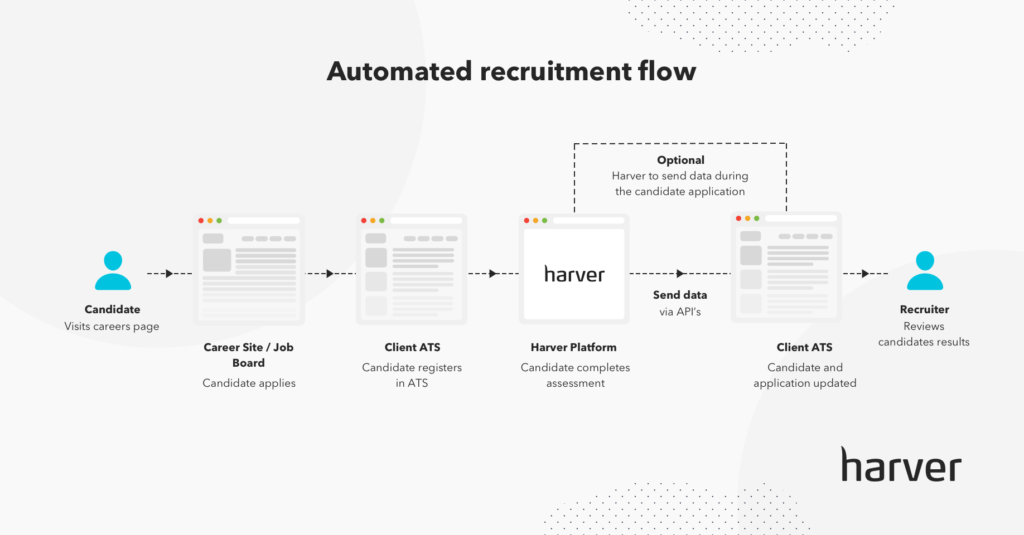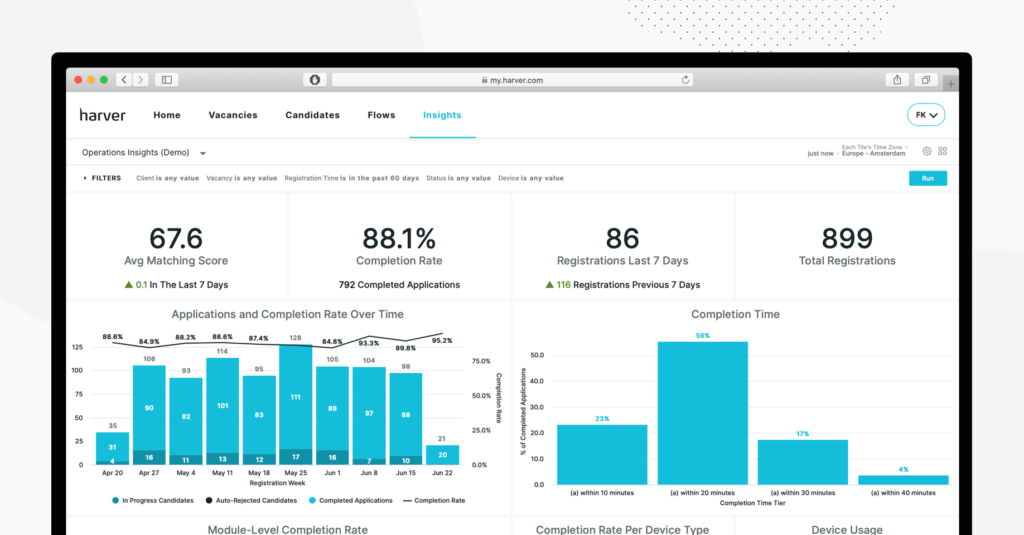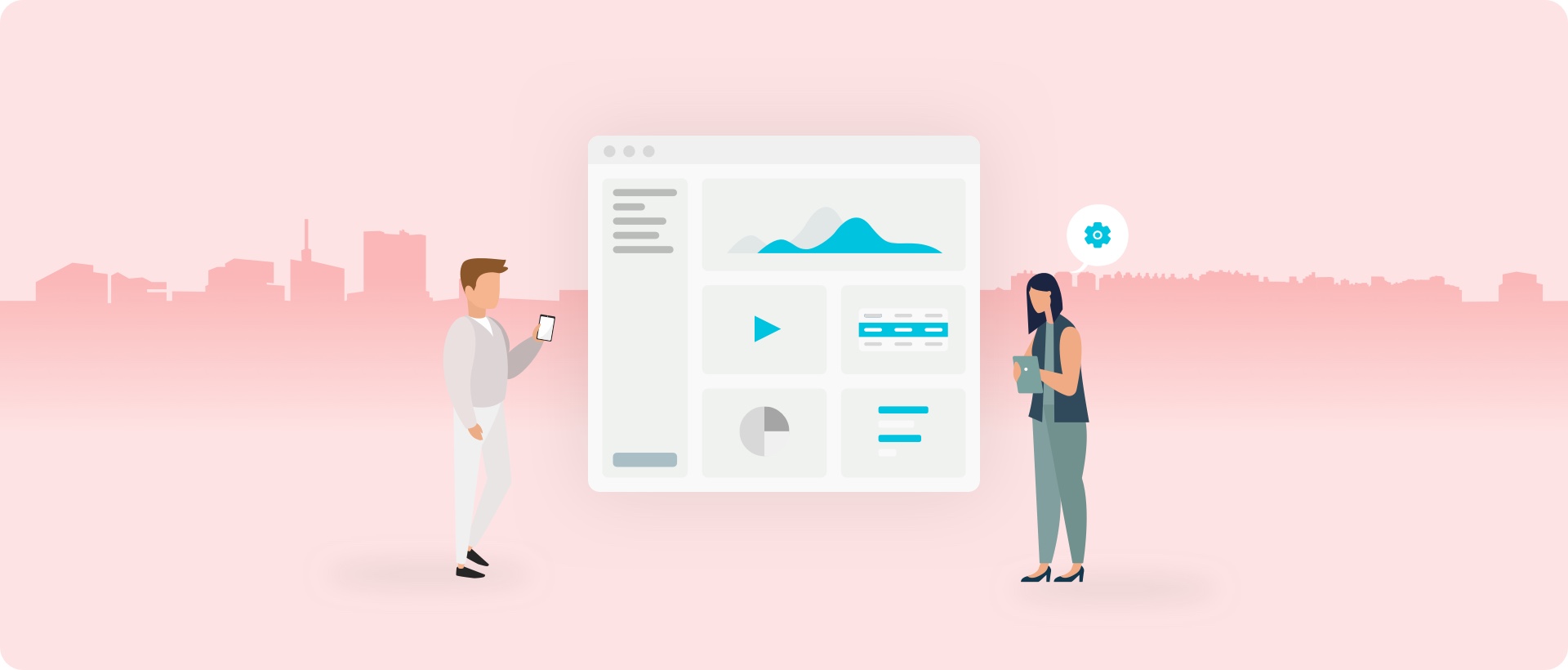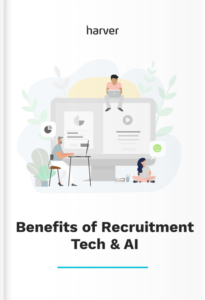The sudden economic slowdown amid the COVID-19 pandemic has brought an inevitable global recession and turned our business strategies and labor market on their heads. In fact, according to some, the world’s heading into the most significant financial crisis since the Great Depression of the 1930s.
During such uncertain times, organizations have to be agile. Now more than ever, business owners need to think on their feet and change their priorities fast should the need arise.
When the lockdown started, many companies had to switch to remote work overnight. And a lot of them were unprepared. This has accelerated the need for digital transformation.
With unexpectedly shifting recruitment efforts, HR and talent acquisition departments also increasingly feel the need for effective digital solutions to navigate their hiring in this ever-changing labor market.
Organizations with advanced digital recruitment strategies have a significant advantage right now. And those without have to act fast.
So how’s COVID-19 speeding up digital transformation within the recruitment sector? How’s recruitment technology facilitating the shift towards virtual hiring? And how does all that help recruiters respond to their changing hiring needs?
What’s in?
What’s digital transformation in recruitment?
Digital transformation simplifies or eliminates admin tasks while increasing operational efficiency through the acquisition of tech and data solutions across company departments, including hiring teams.
Essentially, digital transformation in recruitment comprises using dedicated technology to solve diverse recruitment challenges, including fluctuating and changing hiring needs, increased volumes of candidates, inability to conduct in-person meetings and interviews, and budget cutbacks.
It’s unsurprising that during COVID-19 and beyond, companies might face a decrease in their recruitment budgets. Assuming that you want to continue recruiting effectively and within budget, this makes undergoing a digital transformation all the more essential.
Josh Bersin puts it best when he said: “Online video interviewing, digital assessment, and digital candidate experience strategies were “nice to have” before the crisis. Now they’re business-critical.”
How AI & recruitment technology is changing recruiting experience
Find out how tech has helped other companies grow by enhancing both the recruiters’ and candidates’ experience!
How can digital transformation positively impact recruitment after COVID-19?
Now, let’s look at some of digital transformation’s most notable perks.
Redeployment of workforce
By using digital technology, you can redeploy employees within and across your organization. The needs of your business may have spiraled as a result of COVID-19.
For example, you may need more staff working in your customer service team and fewer inside your physical stores. Having the right tech enables you to boost your internal mobility capabilities and move your workforce to where it’s needed most.
Also, digital recruitment tools allow organizations to hire displaced employees.
For example, CVS needed to hire 50,000 extra workers amid the pandemic. On the other hand, hospitality businesses had to lay off some of their employees. So, CVS decided to build dedicated landing pages for former employees of large hospitality businesses such as Hilton to help them get a job at CVS faster.
As the above scenario shows, more and more people are transitioning into different industries, so you’ll need practical recruitment tools to assess for relevant transferable skills. With the right software, you’ll be able to assign recruits jobs based on their actual abilities, not their previous experience.
This kind of program usually gets candidates to join an online portal where they’ll undergo pre-employment questionnaires and assessments that measure their skills and competencies.
This is then assessed, and applicants receive a breakdown of their skills, including any gaps in their knowledge and expertise that need working on. They’re then matched to any opportunities you have open that are likely to be a good fit.

High volume recruitment
Digital recruitment tools allow recruiters to handle higher volumes of applicants. For example, in 2015, the average number of applicants per opening was 59. This went down to 30 in 2019 due to a fall in unemployment and the booming economy.
Today, it’s predicted that nearly 200 million full-time workers globally will lose their jobs as a result of COVID-19. As such, recruiters need to be prepared to receive a higher volume of job applications.
This means using software that allows you to sift through applications quickly and shortlist your most qualified candidates. A volume-ready recruitment solution enables you to maintain high hiring standards despite the increase in applicant volume.
One particularly important thing to look out for is the recruiting automation capabilities your tech stack offers. See how you can utilize these during your hiring process – think interview scheduling, automated pre-employment testing, etc.
Automating the manual, repetitive parts of the recruitment process will free up more of your time to engage with your strongest candidates.

Real-time analytics
If you’re investing in recruitment technology, make sure it provides up to date, real-time data overview. This enables you to pinpoint any improvement areas that need working on, so you can execute the best possible recruitment strategy.
Not only that, but the right solution provides real-time updates on what’s happening with each of your applicants so you can pivot and adjust your process if needed. You should be able to view key metrics on a simple-to-read dashboard, which allows you to draw conclusions faster, so you can implement any necessary changes to your recruitment strategies.

However, before jumping ahead, be clear about what you want to achieve, and what data you’ll need to do precisely that. Based on the insights you receive from your recruitment analytics, you can automate your recruitment process.
For example, you could immediately schedule an interview once your candidates achieve a certain score in the online assessment. This saves everyone some valuable time, which we’re sure your applicants will appreciate!
It’s also worth noting that access to analytics also provides a vital insight into who your candidates are, their skills, and their location. It stands to reason when you know who your ideal candidates are, you’re in a better position to create content and materials that engage and entice them into applying.
If you’d like to see how Haver can transform your hiring process,
book a demo here!
Upskilling recruiters
To be a successful recruiter in today’s market, being proficient in digital tools and strategies is no longer an option. It’s mandatory.
Digitally transforming recruitment doesn’t only mean using technology to hire people, it also means that your team members need to enhance their skillsets so that your organization can fully benefit from the transformation.
You should provide them with advanced training and resources on the tools that they will be using, but also on recruitment analytics and data-driven hiring.
Using all the tools available to you
Take full advantage of your existing recruitment tech stack. By exploring the functionalities of your recruitment software and putting them to good use, you’ll become a more effective and efficient recruiter. This may also give you the tools you need to cut back on agency spending and more extensive job advertising.
You might not have the budget for new tools – if that sounds like you, make the most of what you already have. There are a few things you can do without having to spend a lot of money.
Invest in your hiring managers. You’re going to need them at their most efficient post-COVID-19. Ensure they’re engaged and encouraged with their work so they, in turn, can better recruit high-quality candidates.
Improve your candidate experience. Despite having to do the majority (if not all) of the recruitment process remotely, ensure that it’s still a pleasant experience. Candidates need to feel safe and have all the information available, so think of ways to improve your candidate communication plan.
A great example of providing a decent candidate experience is if you’re conducting interviews remotely, be efficient. Keep the length of your ‘meetings’ shorter and update your interview guidelines, so they’re more relevant and useful when hiring post-COVID-19.
You can also set text reminders to send candidates the day before their interview. You could even upload company videos and virtual office tours because candidates can’t visit your site. This works wonders for helping candidates get a taste of your company culture without stepping through the office doors!
Supercharging digital transformation to create a digital enterprise is among
Top 5
key strategic priorities for a post-crisis world identified by PwC.
Team collaboration
Hiring teams need to be able to collaborate remotely. This means having tools that enable you to assign projects and tasks to people and provide real-time updates on the recruitment activities. This is where a cloud-based recruitment solution accessible to everyone on the hiring team is worth its weight in gold!
Remember to consider who in your team will be using this technology. Ensure it meets everyone’s needs for a truly collaborative experience. Choose software with a straightforward layout, that’s well-reviewed, and easy for new users to pick up and run with.
Ensuring data security and privacy
Not to be forgotten is the importance of security and data privacy. Confidential candidate information must be kept safe, without the risk of security breaches and data leaks.
Before using any form of digitized tech, assess the security risks it poses, and address these concerns. You’ll also want to double-check that any potential software is ISO certified and GDPR compliant, as well as compliant with local laws in regions where you’re active.
No organization can be 100% protected from hackers. However, when you’re making a digital transformation post-COVID-19, you need to put cybersecurity at the top of your priorities list – alongside recruitment efficiency.
A cloud-based infrastructure not only deals effectively with surges in candidate traffic but also increased storage demands. And, at the same time, they often boast solid security policies, procedures, and controls.
Digital onboarding and reboarding
Your technology has to be capable of onboarding new hires effectively and securely and reboarding employees who have been furloughed.
The purpose of onboarding is to support new employees as they first get started within your organization. They need to understand what your organization’s goals are and where they fit in the broader scheme of your company.
Efficient onboarding also increases employee effectiveness and engagement, particularly during their first 90 days, while they’re still learning on the job.
Digitizing and automating your onboarding and reboarding process has several benefits, including:
Saves money and time: It’s less time consuming and costly than manual onboarding and reboarding staff. That way, your team can focus on more important, revenue-generating work.
Fewer mistakes: Automated processes tend to be more precise as they’re less likely to suffer from human errors.
Enhanced security and data: You can collect new hire data faster electronically. Sensitive info is kept confidential and out of reach, not sitting on someone’s desk.
A streamlined experience: Both your new and furloughed employees receive info that’s on time and clear. There’s no confusion and missing pieces of paper for new and furloughed employees to sift through. Also, automated processes ensure that all relevant people receive the same experience and the same information, eliminating the chance of inadvertent bias.
Efficiency: The faster a new or furloughed employee is onboarded or reboarded, the quicker they can start work. Simple! By giving candidates the right automated experience, you’re empowering them to assimilate info about your organization and their role, so they can hit the ground running.
Successfully onboarded employees are
50%
more productive.
Source: Easygenerator
Even if you’re onboarding your new hires remotely, the experience doesn’t have to suffer. Employ technology and remote onboarding strategies to get your employees productive faster.
Are you ready to digitally transform your recruitment post-COVID-19?
This transition to the ‘new normal’ has sped up digital transformation in many areas of business. Events and business meetings are taking place online, e-commerce is booming, and people are using a wealth of online collaboration tools.
Needless to say, recruitment is no exception. If recruiters want to stay on top of their game, they need to take advantage of recruitment tech to achieve their business goals.
Ready to transform your hiring process?



